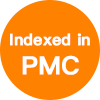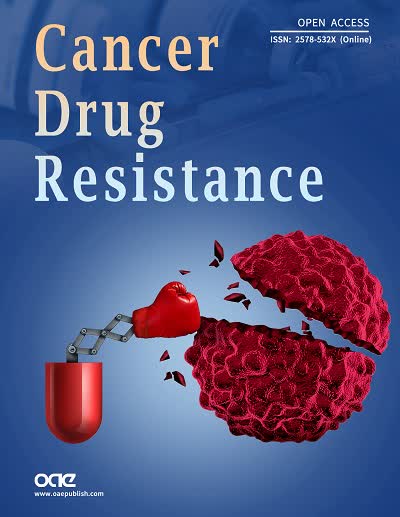REFERENCES
1. Parsons D, Jones S, Zhang X, Lin J, Leary R, et al. An integrated genomic analysis of human glioblastoma multiforme. Science 2008;321:1807-12.
2. Philips H, Kharbanda S, Chen R, Forrest W, Soriano R, et al. Molecular subclasses of high-grade glioma predict prognosis, delineate a pattern of disease progression, and resemble stages in neurogenesis. Cancer Cell 2006;9:157-73.
3. Beroukhin R, Getz G, Nghiemphu L, Barretina J, Hsueh T, et al. Assessing the significance of chromosomal aberrations in cancer: metodology ad application to glioma. PNAS 2007;104:20007-12.
4. Karcher S, Steiner H, Ahmadi R, Zoubaa S, Vasvari G, et al. Different angiogenic phenotypes in primary and secondary glioblastomas. Int J Cancer 2006;118:2182-9.
5. Scherer H. The forms of growth in gliomas and their practical significance. Brain 1940;63:1-35.
6. Smith C, Kilic O, Schiapparelli P, Guerrero-Cazares H, Kim D, et al. Migration phenotype of brain-cancer cells predicts patient outcomes. Cell Reports 2016;15:2616-24.
7. Brodbelt A, Greenberg D, Winters T, Williams M, Vernon S, et al. Glioblastoma in England: 2007-2011. Eur J Cancer 2015;51:533-42.
8. Abbott NJ, Patabendige AA, Dolman DE, Yusof SR, Begley DJ. Structure and function of the blood-brain barrier. Neurobiol Dis 2010;37:13-25.
9. Wang Z, Sun H, Yakisich JS. Overcoming the blood-brain barrier for chemotherapy: limitations, challenges and rising problems. Anticancer Agents Med Chem 2014;14:1085-93.
10. Groothuis D. The blood-brain and blood-tumor barriers: a review of strategies for increasing drug delivery. Neuro-Oncology 2000;2:45-59.
11. Newlands ES, Blackledge GR, Slack JA, Rustin GJ, Smith DB, et al. Phase I trial of temozolomide (CCRG 81045:M&B 39831: NSC 362856). Br J Cancer 1992;65:287-91.
12. Denny BJ, Wheelhouse RT, Stevens MGF, Tsang LL, Slack JA. NMR and molecular modeling investigation of the mechanism of activation of the antitumor drug temozolomide and its interaction with DNA. Biochemistry 1994;33:9045-51.
13. Tisdale MJ. Antitumor imidazotetrazines - XV. Role of guanine O6 alkylation in the mechanism of cytotoxicity of imidazotetrazinones. Biochem Pharmacol 1987;36:457-62.
14. Hegi M, Diserens AC, Gorlia T, Hamou MF, de Tribolet N, et al. MGMT Gene Silencing and Benefit from Temozolomide in Glioblastoma. N Engl J Med 2005;352:997-1003.
15. Zhang J, Stevens MFG, Laughton CA, Madhusudan S, Bradshaw TD. Acquired resistance to Temozolomide in glioma cell lines: molecular mechanisms and potential translational applications. Oncology 2010;78:103-14.
16. Zhang J, Stevens MF, Bradshaw TD. Temozolomide: mechanisms of action, repair and resistance. Curr Mol Pharmacol 2012;5:102-14.
17. Wiewrodt D, Nagel G, Dreimuller N, Hundsberger T, Perneczky A, et al. MGMT in primary and recurrent human glioblastomas after radiation and chemotherapy and comparison with p53 status and clinical outcome. Int J Cancer 2008;122:1391-9.
18. Kitange G, Carlson B, Schroder M, Grogan P, Lamont J, et al. Induction of MGMT expression is associated with temozolomide resistance in gliobastoma xenografts. Neuro-Oncology 2009;11:281-91.
19. Zhang J, Hummersone M, Matthews CS, Stevens MFG, Bradshaw TD. N3-Substituted temozolomide analogues overcome methylguanine-DNA methyltransferase and mismatch repair precipitating apoptotic and autophagic cancer cell death. Oncology 2015;88:28-48.
20. Poulogiannis G, Frayling IM, Arends MJ. DNA mismatch repair deficiency in sporadic colorectal cancer and Lynch syndrome. Histopathology 2010;56:167-79.
21. Cahill DP, Codd PJ, Batchelor TT, Curry WT, Louis DN. MSH6 inactivation and emergent temozolomide resistance in human glioblastomas. Clin Neurosurg 2008;55:165-71.
22. Yip S, Miao J, Cahill DP, Lafrate AJ, Aldape K, et al. MSH6 mutations Arise in Glioblastomas during Temozolomide Therapy and Mediate Temozolomide Resistance. Clin Cancer Res 2009;15:4622-9.
23. Hunter C, Smith R, Cahill DP, Stephens P, Stevens C, et al. A hypermutation phenotype and somatic MSH6 mutations in recurrent human malignant gliomas after alkylator chemotherapy. Cancer Res 2006;66:3987-91.
24. Daniel P, Sabri S, Chaddad A, Meehan B, Jean-Claude B, et al. Temozolomide induced hypermutation in glioma: evolutionary mechanisms and therapeutic opportunities. Front Oncol 2019;9:41.
25. Calatozzolo C, Gelati M, Ciusani E, Sciacca FL, Pollo B, et al. Expression of drug resistance proteins Pgp, MRP1, MRP3, MRP5 and GST-pi in human glioma. J Neurooncol 2005;74:113-21.
26. Balesaria S, Brock C, Bower M, Clark J, Nicholson SK, et al. Loss of chromosome 10 is an independent prognostic factor in high-grade gliomas. British J Cancer 1999;81:1371-7.
27. Lefranc F, Rynkowski M, DeWitte O, Kiss R. Present and potential future adjuvant issues in high-grade astrocytic glioma treatment. Adv Tech Stand Neurosurg 2009;34:3-35.
28. Bax DA, Little SE, Gaspar N, Perryman L, Marshall L, et al. Molecular and phenotypic characterisation of paediatric glioma cell lines as models for preclinical drug development. PLoS One 2009;4:e5209.
29. Gaspar N, Marshall L, Perryman L, Bax DA, Little SE, et al. MGMT-Independent Temozolomide resistance in paediatric glioblastoma cells associated with a PI3-kinase-mediated HOX/STEM cell gene signature. Cancer Res 2010;70:9243-52.
30. Molenaar RJ, Maciejewski JP, Wilmink JW, van Noorden CJF. Wild-type and mutated IDH1/2 enzymes and therapy responses. Oncogene 2018;37:1949-60.
31. Lu Y, Kwintkiewicz J, Liu Y, Tech K, Frady LN, et al. Chemosensitivity of IDH1-mutated gliomas due to an impairment in PARP1-mediated DNA repair. Cancer Res 2017;77:1709-18.
32. Plummer R, Jones C, Middleton M, Wilson R, Evans J, et al. Phase I study of the poly(ADP-Ribose) polymerase inhibitor, AG014699, in combination with temozolomide in patients with advanced solid tumors. Clin Can Res 2008;14:7917-23.
33. Cao X, Lu Y, Liu Y, Zhou Y, Song H, et al. Combination of PARP inhibitor and temozolomide to suppress chordoma progression. J Mol Med (Berl) 2019;97:1183-93.
34. Zhang J, Stevens MFG, Hummersone M, Madhusudan S, Laughton CA, et al. Certain imidazotetrazines escape O6-methylguanine-DNA methyltransferase and mismatch repair. Oncology 2011;80:195-207.
35. Cousin D, Hummersone MG, Bradshaw TD, Zhang J, Moody CJ, et al. Synthesis and growth inhibitory activities of imidazo[5,1-d]-1,2,3,5-tetrazine-8-carboxamides related to the anti-tumour drug temozolomide, with appended silicon benzyl and heteromethyl groups at the 3-position. MedChemComm 2018;19;9:545-53.
36. Othman RT, Kimishi I, Bradshaw TD, Storer LCD, Korshunov A, et al. Overcoming multiple drug resistance mechanisms in medulloblastoma. Acta Neuropath Comm 2014;2:57.
37. Cousin D, Zhang J, Hummersone MG, Matthews CS, Frigerio M, et al. Antitumor Imidazo[5,1-d]-1,2,3,5-tetrazines: compounds modified at the 3-position overcome Resistance in human glioblastoma cell lines. MedChemComm 2016;7:2332-43.
38. Svec RL, Furiassi L, Skibinski CG, Fan TM, Riggins GJ, et al. Tunable stability of imidazotetrazines leads to a potent compound for glioblastoma. ACS Chem Biol 2018;13:3206-16.
39. Yang Z, Wei D, Dai X, Stevens MFG, Bradshaw TD, et al. C8-Substituted imidazotetrazine analogs overcome temozolomide resistance by inducing DNA adducts and DNA damage. Front Oncol 2019;9:485.
40. Summers H. .
41. Oberoi R, Parrish K, Sio T, Mittapalli R, Elmquist W, et al. Strategies to improve delivery of anticancer drugs across the blood-brain barrier to treat glioblastoma. Neuro-Oncology 2015;18:27-36.
42. Kim J, Ahn S, Kim Y. Nanotherapeutics engineered to cross the bllo-brain barrier for advanced drug delivery to the central nervous system. J Industrial and Eng Chem 2019;73:8-18.
43. Ostermann S, Csajka C, Buclin T, Leyvraz S, Lejeune F, et al. Plasma and cerebrospinal fluid population pharmacokinetics of temozolomide in malignant glioma patients. Clin Can Res 2004;10:3728-36.
44. Portnow J, Badie B, Chen M, Liu A, Blanchard S, et al. The neuropharmacokinetics of temozolomide in patients with resectable brain tumors: potential implications for the current approach to chemoradiation. Clin Cancer Res 2009;15:7092-8.
45. Thiel EC. Ferritin: structure, gene regulation, and cellular function in animals, plants and microorganisms. Annu Rev Biochem 1987;56:289-315.
46. Heger Z, Skalickova S, Zitka O, Adam V, Kizek R. Apoferritin applications in nanomedicine. Nanomedicine (Lond) 2014;9:2233-45.
47. Monti DM, Ferraro G, Merlino A. Ferritin-based anticancer metallodrug delivery: Crystallographic, analytical and cytotoxicity studies. Nanomedicine NBM 2019;20:101997.
48. Li L, Fang C, Ryan J, Niemi E, Lebrón J, et al. Binding and uptake of H-ferritin are mediated by human transferrin receptor-1. PNAS 2010;107:3505-10.
50. Hulet SW, Powers S, Connor JR. Distribution of transferrin and ferritin binding in normal and multiple sclerotic human brains. J Neurol Sci 1999;165:48-55.
51. Jeffries W, Brandon M, Hunt S, Williams A, Gatter K, et al. Transferrin receptor on endothelium of brain capillaries. Nature 1984;312:162-3.
52. Rosager A, Sørensen M, Dahlrot R, Hansen S, Schonberg D, et al. Transferrin receptor-1 and ferritin heavy and light chains in astrocytic brain tumors. Expression and prognostic value. PLoS One 2017;12:e0182954.
53. Johnsen KB, Burkhart A, Melander F, Kempen PJ, Vejlebo JB, et al. Targeting transferrin receptors at the blood-brain barrier improves the uptake of immunoliposomes and subsequent cargo transport into the brain parenchyma. Sci Rep 2017;7:10396.
54. Duck KA, Connor JR. Iron uptake and transport across physiological barriers. Biometals 2016;29:573-91.
55. Todorich B, Zhang X, Connor JR. H-Ferritin is the major source of iron for oligodendrocytes. Glia 2011;59:927-35.
56. Cordon-Cardo C, O’Brien JP, Casals D, Rittman-Grauert L, Biedler JL, et al. Multidrug-resistance gene (P-glycoprotein) is expressed by endothelial cells at blood-brain barrier sites. Proc Nat Acad Sci USA 1989;86:695-8.
57. Kuruppu AI, Zhang L, Collins H, Turyanska L, Thomas NR, et al. An apoferritin-based drug delivery system for the tyrosine kinase inhibitor gefitinib. Adv Healthcare Mater 2015;4:2816-21.
58. Breen AF, Wells G, Turyanska L, Bradshaw TD. Development of novel apoferritin formulations for antitumor benzothiazoles. Cancer Reports 2019; doi: 10.1002/cnr2.1155.
59. Kim M, Rho Y, Jin KS, Ahn B, Jung S, et al. pH-depedent structures of ferritin and apoferritin in solution: disassembly and reassembly. Biomacromolecules 2011;12:1629-40.
60. Noonan EM, Shah D, Yaffe MB, Lauffenburger DA, Samson LD. O6-Methylguanine DNA lesions induce an intra-S-phase arrest from which cells exit into apoptosis governed by early and late multi-pathway signalling network activation. Integr Biol (Camb) 2012;4:1237-55.
61. Silber JR, Bobola MS, Blank A, Chamberlain MC. O6-Methylguanine-DNA methyltransferase in glioma therapy: promise and problems. Biochim Biophys Acta 2012;1826:71-82.
62. Kurimoto T, Kondo A, Ogino I, Fujimura J, Arakawa A, et al. Effect of O6-methylguanine-DNA methyltransferase methylation in medulloblasoma. Mol Clin Oncol 2017;7:1107-11.
63. Pollack IF, Hamilton RL, Sobol RW, Burnham J, Yates AJ, et al. O6-Methylguanine-DNA methyltransferase expression strongly correlates with outcome in childhood malignant gliomas: results from the CCG-045 cohort. J Clin Oncol 2006;24:3431-7.
64. Rood BR, Zhang H, Cogen PH. Intercellular heterogeneity of expression of the MGMT DNA repair gene in pediatric medulloblastoma. Neuro-Oncology 2004;6:200-7.
65. Bobbola MS, Berger MS, Ellenbogen RG, Roberts TS, Geyer JR, et al. O6-Methylguanine-DNA methyltransferase in pediatric primary brain tumors: relation to patient and tumor characteristics. Clin Cancer Res 2001;7:613-9.
66. Grossman SA, Finklestein DM, Ruckdeschel JC, Trump DL, Moynihan T, et al. Randomized prospective comparison of intraventricular methotrexate and thiotepa with previously untreated neoplastic meningitis. Eastern Cooperative Oncology Group. Journal of Clinical Oncology 1993;11:561-9.
67. Ishikawa E, Tsuboi K, Takano S, Uchimura E, Nose T, et al. Intratumoral injection of IL-2-activated NK cells enhances the antitumor effect of intradermally injected paraformaldehyde-fixed tumor vaccine in a rat intracranial brain tumor model. Cancer Sci 2004;95:98-103.
68. Rustamzadeh E, Hall WA, Todhunter DA, Vallera VD, Low WC, et al. Intracranial therapy of glioblastoma with the fusion protein DTAT in immunodeficient mice. Int J Cancer 2006;120:411-9.
69. Lewis O, Woolley M, Johnson D, Rosser A, Barua NU, et al. Chronic, intermittent convection-enhanced delivery devices. J Neurosci Methods 2015;259:47-56.
70. Jahangiri A, Chin AT, Flanigan PM, Chan R, Aghi MK. Convectin-enhanced delivery in glioblastoma: a review of preclinical and clinical studies. J Neurosurg 2017;126:191-200.











